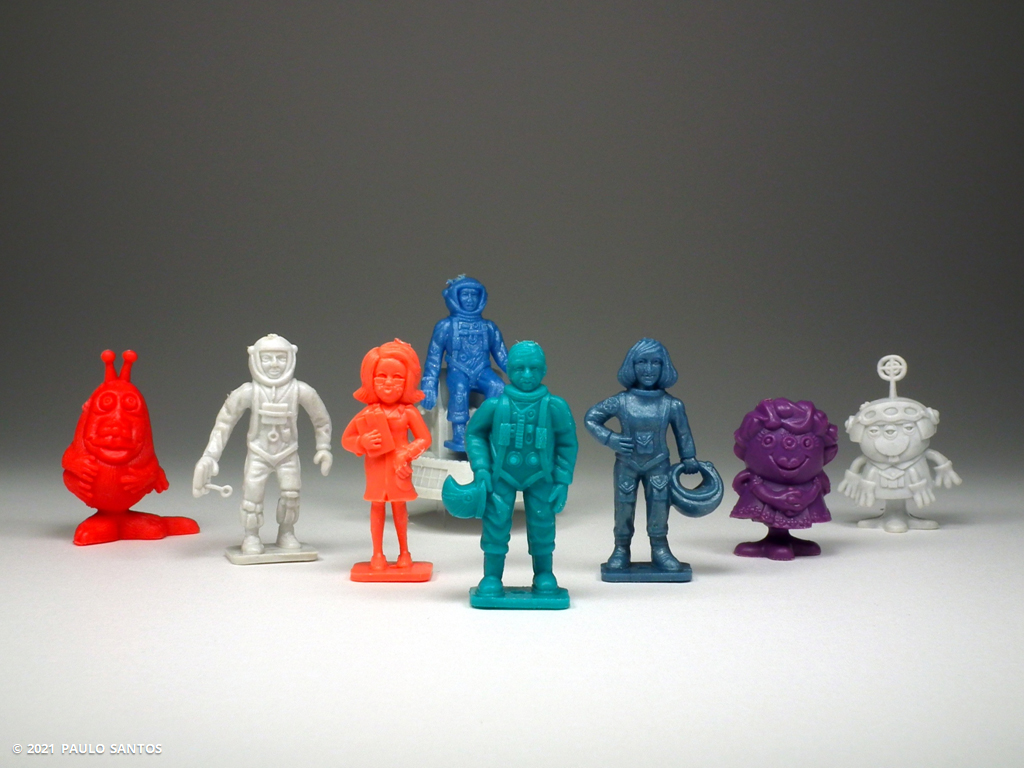The First Step
When, after decades of collecting toys, models and memorabilia, we decide to share some of our objects on a digital page, we all face the same dilemma—where to begin this amazing journey? With some rare and valuable toys? With unique and priceless models proudly made by ourselves? Or with surprisingly realistic scenes in our layouts? As a child, I had the privilege of playing with model trains, slot cars and exquisite tinplate toys. However and in truth, for a few years I only played with them on the weekends, under my father's watchful eye. My everyday toys were usually die-cast vehicles, plastic figurines and Lego bricks. Why not start this journey there?
My die-cast vehicles purchased in Portugal were from Matchbox, Corgi and Majorette. Sometimes, family and friends would bring some Norev, Schuco, Siku and Hot Wheels from abroad. Later, some Efsi, Mira, Guisval, Yatming and Zylmex began arriving in my "garage." My first purchase was a charming Tomica model in the late 1970s, the Datsun No.1, which I still keep. All of these die-cast vehicles were in scales around 1:64. At the time, I wasn't keen on larger scales like 1:43 or 1:36. Even so, I had some models from Märklin, Tekno, Dinky Toys, Corgi Toys, Matchbox, Solido and Eligor. Portuguese-made die-cast vehicles were also present, from MetOsul and Luso Toys, as well as, in even larger scales and in plastic and sheet metal, some examples from Pê-Pê.
My plastic figurines were cowboys and indians or knights and medieval soldiers made by Timpo and Britains in scales around 1:32. These plastic figurines didn't pair well with small metal cars and so were kept in their own context, usually involving the capture of a fort or castle. Other plastic figurines were freebies from various products like ice cream or cereal and formed interesting collections—my favorite theme was space exploration. At some point, I discovered another type of plastic figurines—the 1:76 scale Matchbox and Airfix toy soldiers. Soon, I and a few friends mobilized large detachments of military forces, including properly painted and detailed vehicles—and war broke out in a garden near home.
Things started to go wrong when a gardener came to complain about our trench work—something to do with damaged roots and water and dying plants. Then they really went wrong when I decided to employ "live ammunition," essentially carnival explosives bought at a tobacconist's, some reasonably potent and spectacular. After a few bombings that were as effective as they were noisy, mothers rushed to the scene, fingers were pointed, and the war ended right there. Everyone went home—and I was grounded. Damn.
So let's begin this amazing journey with some die-cast vehicles and plastic figurines. Some of these toys and models were made a long time ago, others not so much. A few photos and a brief description, a comment. I'll be happy if I make you smile here and there. For all intents and purposes, it's a long journey. ●
Versão portuguesa, aqui




Comments
Post a Comment